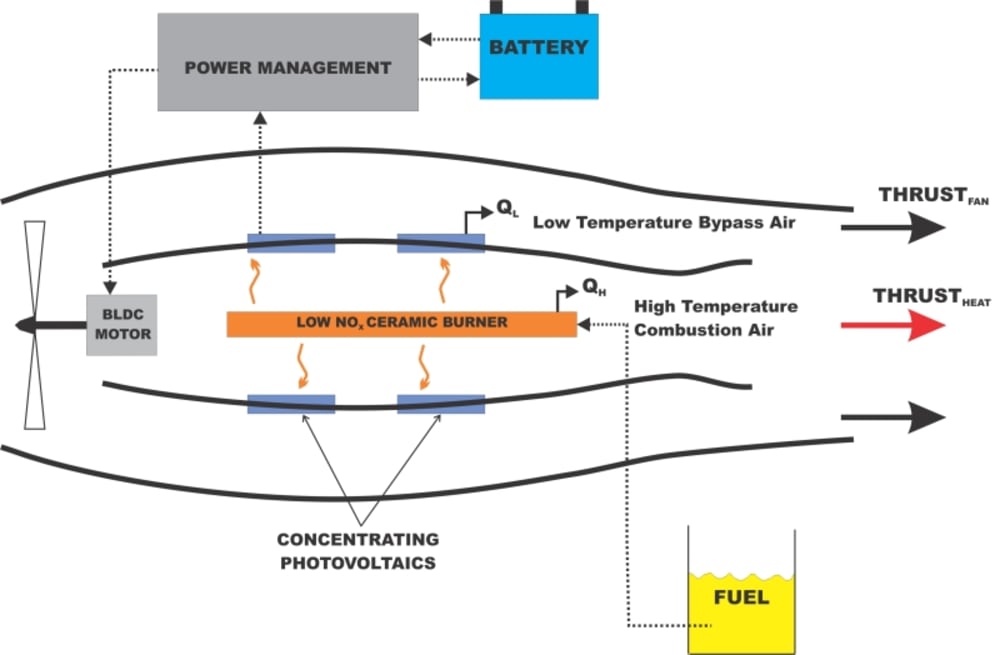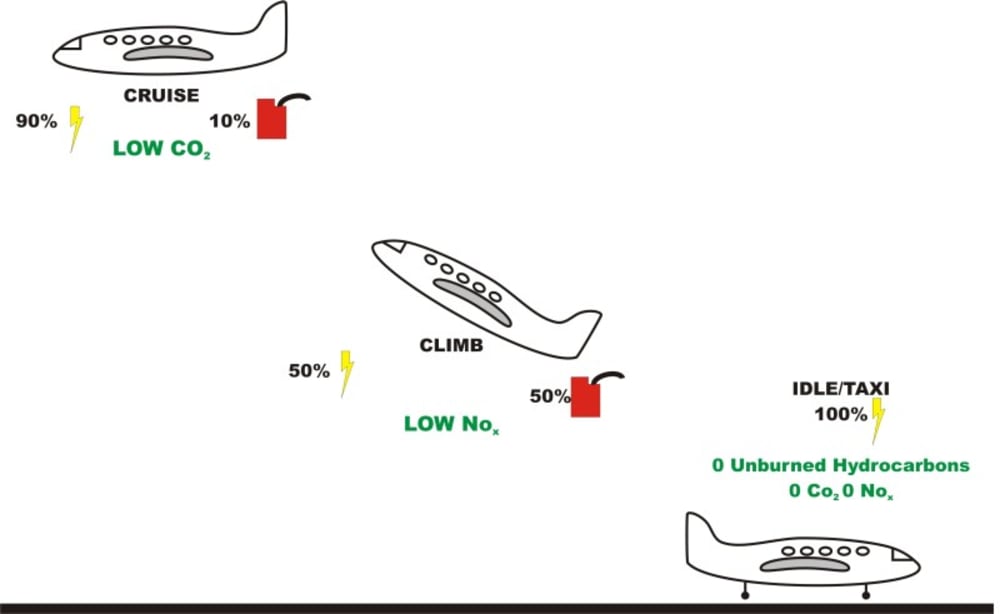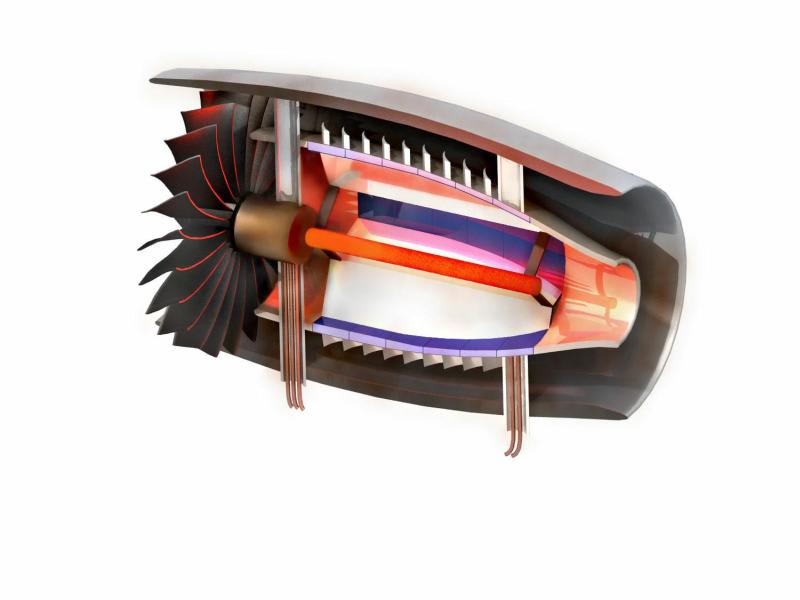For decades aerospace engineers have been warning of pollution saturation in the stratosphere/troposphere regions where commercial jets operate, and of the consequences of elevated ground level ozone generated at airports. This project initiates development of a hybrid aircraft engine that produces no unburned hydrocarbons at idle, low NOx at takeoff, and low CO2 at cruise.
SDGroup’s patent pending propulsion system consists of an electric motor–driven ducted fan in the forward section of the engine nacelle. Rearward is a radiant energy combustor that burns fuel stoichiometrically inside a recuperated ceramic tube. The burner is tuned to emit predominantly in the 300 to 1800 nanometer wavelength, matching the operating bandwidth of concentrating photovoltaic (CPV) cells. These cells line the inside circumference of the duct, have a photon to electricity conversion efficiency of 43%, and a power density of 100 watts per square inch. Dichroic cold mirrors reflect the usable radiation and absorb and convect longwave heat energy into the ducted airstream, providing an additional thrust component.
An aircraft equipped with this combined thermodynamic cycle engine, power management electronics, and onboard lithium battery pack will operate using the low NOx burner or electric power at idle conditions, and battery power with fuel generated photoelectric power augmented by waste heat thrust for takeoff. It will cruise using battery power, with fuel generated energy available for range extension. Electric aircraft already on the market can only operate for 1.5 hours due to Lithium-ion battery energy density limitations, and electric aircraft vendors anticipate using IC auxiliary power units to increase time in the air. Extending range by integrating fuel-to-electric conversion directly into the engine architecture is the more forward looking solution.
Performance limiting factors for this hybrid engine are: motor power density (10kW/kg), battery energy density (180 Wh/kg), emitter efficiency (80%), and photocell conversion efficiency (43%–SpectroLab). Given these present limitations, the combined energy to propulsive effort efficiency will be 55% when operating in the 50% battery, 50% fuel mode. CPV conversion efficiency is expected to improve to 55% in ten years and 400 Wh/kg energy density batteries have already been lab verified by Envia Systems.
The proposed engine architecture provides the flexibility to reduce emissions in different aircraft operating regimes. Battery-to-fuel ratio input can be varied to maximally reduce noise, NOx, unburned hydrocarbons, or CO2 emissions at idle, takeoff, and cruise power settings. Taxiway ‘green energy’ battery charging reduces overall fossil fuel consumption for each flight. Stoichiometric combustion enables exhaust heat recuperation using small heat exchangers. Absence of rotating components in the hot section obviates the need for exotic heat resistant materials and dramatically reduces maintenance costs.
SDGroup has the laboratory facilities to computer model, fabricate, and wind tunnel and emissions test a small version of the hybrid engine. The targeted applications are drones, small aircraft, and VLJs. An aircraft manufacturer has expressed interest in the project and the Army has solicited proposals for a hybrid engine having similar characteristics for unmanned vehicles.
Like this entry?
-
About the Entrant
- Name:Doug Galbraith
- Type of entry:teamTeam members:Doug Galbraith
Ken McGowan
Elise DePetris - Software used for this entry:SolidWorks, Corel
- Patent status:pending








